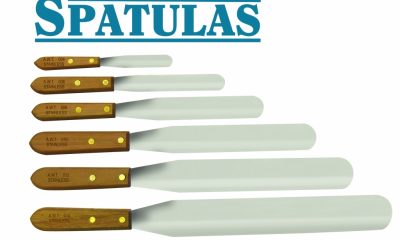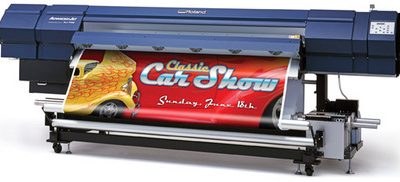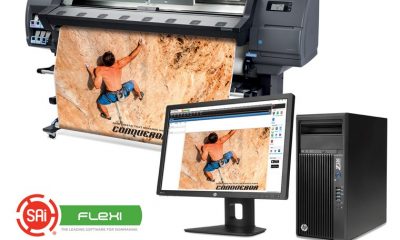Business & Industry
Published
15 years agoon
In my last column, I examined some of the problems that a reader faced as he took the management reins in a print shop that his company recently acquired. His mission was to quickly turn around the inefficiencies and the poor management practices that put the new business on the auction block in the first place and to make some key equipment investments geared towards the goal of bringing the shop back to profitability.
I talked about the importance of taking time to simply observe how things are done and avoid the danger of jumping in and making changes without first having the big picture clearly in focus. I also touched on ways to get the staff to work with you and not against you. Now it’s time to formulate a successful plan that will help implement some very necessary changes. Before we get started, let’s consider what our ultimate goals are beyond the obvious ones that we have already discussed.
I have observed during my many years in the screen-printing industry that you can gauge the level of efficiency by gauging the amount of manic activity that you observe daily in the workplace. If the production process is out of control, you will see workers’ tempers flaring, equipment breaking, fingers pointing, and overtime required to simply keep afloat. If the process is under control, on the other hand, you’ll see efficiency, a calm workforce, and a get-it-done attitude that sometimes borders on boring. Don’t worry, in this business we all know it will never, ever get boring; nevertheless, it’s the goal that we will work towards.
Do everything you can to avoid chaos
At this point, it’s very important to resist the urge to fix everything at once. As soon as you begin observing the production floor, you’ll notice that things that need to be changed, and you will be tempted to jump in and start fixing everything. Don’t do it. Stay detached until you have seen how the entire process works. Allow yourself time to understand how your changes will impact the way things function further down the line.
Follow some jobs from the moment they become your responsibility to the point where they are shipped to the customer. Get a large piece of paper and map out a flow chart of everything that could potentially happen to any order. Include as much detail as you possibly can. Computer programs are available to help you do this, but I believe that the physical effort you put into transferring your hard work onto paper will give you a solid, tactile grip on the problems you face. It also looks good hanging in your office. One exception to this rule is, of course, when you see potential safety and health risks. Don’t do anything else until you can ensure that the work environment is safe. Make sure employees wear goggles when necessary, chemicals are stored safely, and that your workforce observes safeguards and safety rules.
Find the right place to start
Once you have a solid grasp on how things currently are being done, it’s time to figure out where to begin making changes. It’s tempting to tackle the biggest problem first, but it’s not always the best route to take. Pinpoint some things to change that will cause the least amount of upheaval, while giving a demonstrable improvement in productivity and alleviating some worker frustration. Attempt to show early on that your improvements will benefit your fellow workers and your bottom line, and your staff will be much more willing to tackle the more difficult projects that come later.
Make sure whatever you change first will work because, as we all know, starting with a failure is a very difficult situation from which to recover. Often, I have found that simple things like buying a squeegee sharpener or implementing some needed changes in the screenmaking process leads to fewer breakdowns on the press, better prints, and a smoother work day. Once you have a few small victories under your belt, it will be much easier to inspire your workforce to take on the serious problems that will ultimately result in your biggest gains. Use the data that you compile on day-to-day production goals to demonstrate to both your coworkers and upper management that things will turn around. If those figures don’t improve, use that knowledge to find another solution.
Make change a permanent part of the workday
Once you have established your management style as one of constant improvement, it will start to become a natural part of the daily work cycle and hopefully filter down to the people that you guide. A good rule to follow is never go home at night without knowing that you have implemented at least one well-planned, non-disruptive improvement somewhere in your workplace. Often, you can get lost in the day-to-day details, but if you follow the logic of this rule you’ll soon find that, over a period of time, you’ll accomplish far more than you thought was possible.
Information is the key to success
I am amazed at the number of shops I visit where little or no production control exists. Can you tell me right now where every job on your schedule is at this moment and where it will be precisely at this time tomorrow? If you can’t do this, you can’t do your job. Computer scheduling programs can help you gain production control, using bar code scans and other features.
These days, it’s possible to have operators enter information into a computer at the beginning and end of every process and update a database in real time. It’s simple but very effective. If you don’t have a production schedule running and updating for you every day, then you need to get one. In a small shop, a production schedule can be as simple as a clipboard placed at every workstation, where operators enter start and finish times. You can collect the information several times a day and enter it into an Excel spreadsheet. In a larger shop, you will have to decide whether it is worthwhile to spring for a commercially available program. Whatever you decide, you need to have this information on hand at all times to minimize any surprises that will steer you away from your main focus.
In my next column, I’ll discuss how to find and implement improvements that will bring the biggest returns in the shortest time. I will explain what is necessary to have in place before adding new presses and how to use employee incentives correctly to improve production figures without hurting the bottom line. I know it sounds crazy, but let’s look forward to the morning when we walk into our shop and realize that the strange, unfamiliar feeling we experience that day is not panic. It might actually be boredom. You’re right, it’ll never happen, but it’s still nice to dream, isn’t it?
Gordon Roberts has a history in screen-printing production management that spans more than 25 years. He has held supervisory positions in shops that represent a broad spectrum of application areas and markets, including printed electronics, apparel, signage, and retail graphics. Roberts has presented training courses on the basics of screen-printing production and on shop management for the Screentech Institute and is presently a consultant for the screen industry. He can be reached at screenconsult@aol.com

Subscribe

Magazine
Get the most important news
and business ideas from Screenprinting Magazine.
Most Popular
-

 Case Studies2 months ago
Case Studies2 months agoHigh-Density Inks Help Specialty Printing Take Center Stage
-

 Art, Ad, or Alchemy2 months ago
Art, Ad, or Alchemy2 months agoF&I Printing Is Everywhere!
-

 Andy MacDougall2 months ago
Andy MacDougall2 months agoFunctional and Industrial Printing is EVERYWHERE!
-

 Columns3 weeks ago
Columns3 weeks ago8 Marketing Mistakes Not to Make When Promoting Your Screen Printing Services Online
-

 Editor's Note3 weeks ago
Editor's Note3 weeks agoLivin’ the High Life
-

 Marshall Atkinson3 weeks ago
Marshall Atkinson3 weeks agoHow to Create a Winning Culture in Your Screen-Printing Business
-

 Thomas Trimingham2 months ago
Thomas Trimingham2 months ago“Magic” Marketing for Screen Printing Shops
-

 News & Trends2 months ago
News & Trends2 months agoWhat Are ZALPHAS and How Can You Serve Them in Your Print Business?






